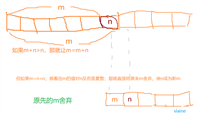一、二分类
import numpy as np
import matplotlib.pyplot as plt
from sklearn import datasets
from sklearn.model_selection import train_test_split
from sklearn.preprocessing import standardscaler
from sklearn.linear_model import logisticregression
from sklearn.metrics import accuracy_score, classification_report, confusion_matrix
# 加载数据集
iris = datasets.load_iris()
x = iris.data[:, :2] # 只使用前两个特征
y = (iris.target != 0) * 1 # 将标签转换为二分类问题
# 数据标准化
scaler = standardscaler()
x = scaler.fit_transform(x)
# 划分训练集和测试集
x_train, x_test, y_train, y_test = train_test_split(x, y, test_size=0.3, random_state=42)
# 训练逻辑回归模型
clf = logisticregression()
clf.fit(x_train, y_train)
# 预测
y_pred = clf.predict(x_test)
# 计算准确率
accuracy = accuracy_score(y_test, y_pred)
print(f"accuracy: {accuracy}")
# 分类报告
print("classification report:")
print(classification_report(y_test, y_pred))
# 混淆矩阵
print("confusion matrix:")
print(confusion_matrix(y_test, y_pred))
# 绘制决策边界
def plot_decision_boundary(clf, x, y):
x_min, x_max = x[:, 0].min() - 1, x[:, 0].max() + 1
y_min, y_max = x[:, 1].min() - 1, x[:, 1].max() + 1
xx, yy = np.meshgrid(np.arange(x_min, x_max, 0.01),
np.arange(y_min, y_max, 0.01))
z = clf.predict(np.c_[xx.ravel(), yy.ravel()])
z = z.reshape(xx.shape)
plt.contourf(xx, yy, z, alpha=0.8)
plt.scatter(x[:, 0], x[:, 1], c=y, edgecolors='k', marker='o')
plt.xlabel('feature 1')
plt.ylabel('feature 2')
plt.title('logistic regression decision boundary')
plt.show()
plot_decision_boundary(clf, x, y)
二、算法介绍
逻辑回归是一种二分类算法,它只能处理两个类别
标准化的目的是将特征数据调整到一个标准的范围内(通常是均值为0,标准差为1),从而消除不同特征之间的量纲差异。这对于许多机器学习算法来说都非常重要,尤其是使用梯度下降的算法,如逻辑回归、神经网络等。标准化可以加快收敛速度并提高模型性能。




发表评论